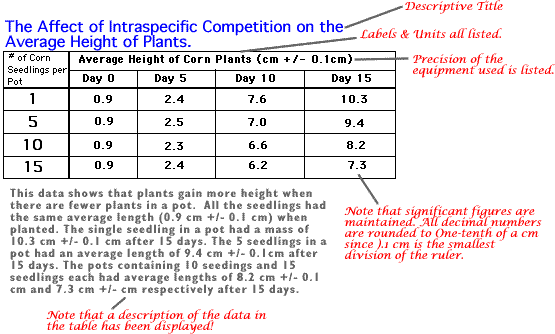Precision of Measurements
It is rare that you will measure an object precisely. In many cases, you must partially estimate a measurement because it fits between two defined measurements on the instrument used. In the photo below, the red rectangle measures someplace between 2.3 and 2.4 cm long. We must estimate its length, and that thus imparts a source of error in our measurement.

We can determine the degree of precision of any scientific device we are using (metric ruler, balance beam, pipette, graduated cylinder, etc.) by finding the smallest division on the instrument. In the photo above, the degree of precision is 1 mm (or 0.1 cm) since that is the smallest division we can see without estimating.
The measurement of the red rectangle above would thus be measured at 2.35 cm +/- 0.1 cm. The +/- 0.1 cm in this case lets us know how precise the metric ruler is, and this should be recorded at the top any column in a data table where a measurement has been taken using this device!
We need to consider the degree of precision of the measuring devise when making measurements. If you are measuring small quantities, then you need to use equipment that is more precise to avoid a greater potential for error!

If we measure the blue rectangle above, we will note that it is about 0.33 cm +/- 0.1 cm long. Note that the error of 0.1 cm is a large percentage ( about 30%) of the measurement! This is not very precise! We would thus need to use a ruler that measures to smaller divisions (like 10ths of a mm or perhaps 1/2 mm) to lower this margin of error to more respectable levels.
Displaying Precision Measurements in Data Tables

Note that the precision of the metric ruler that was used is indicated next to the appropriate label in parentheses at the top of the table. This, like the units, is listed only once so you don't have to constantly repeat it behind each number in the table!
[Review]